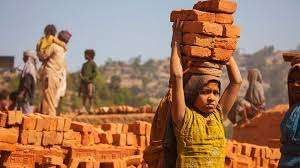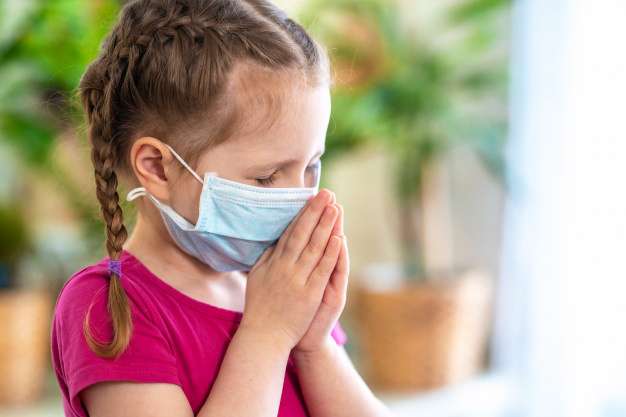
Children at Risk
Pr. Biju Eapen
Introduction
Children constitute principle assets of any country. Children’s development is as important as the development of material resources and the best way to develop national resources is to take care of children. India has the largest child population in the world. Not only does India have the world’s largest number of children, but also the largest number of vulnerable child population of them nearly 44 million is in difficult circumstances. ‘Children at Risk’ includes orphans, abandoned children, destitute children, working and street children, victims of natural calamities, children with disabilities, HIV/AIDS affected children, children of sex workers, children in conflict with law, children of refugees, migrant and construction workers. This article deals with the ‘Children at Risk’ especially working children, victims of child abuse, street children and children live with HIV/AIDS.
Child Labour
Child labour is one of the worst forms of violation of child right. The elevated scale of the child labour makes it a primary concern for national government. When a child is earning wages to support himself or his family, in a manner that directly or indirectly interferes with his growth and development, it is child labour. This includes work in any sector formal or non-formal, within and outside the family. Even family labour that is detrimental to the child’s education, recreation, physical, mental or moral health is deemed child labour.
Present Scenario
In India, the government estimates that 12.6 million children under the age of 14 are working in various occupations including hazardous ones. NGO estimates put the number of children employed in domestic work and roadside eateries alone at two million. Girl children are double disadvantaged, it is therefore imperative to take a gender perspective into account in examining the situation of the children. It is generally considered that a child who is out of school is a potential ‘child labour’.
The children found in the labour sectors are: agriculture where performing heavy work, exposed to hazards of working with machinery and chemicals; hazardous industries where engage in glass making, mining, construction, carpet weaving, cloth making and fireworks etc; small industrial workshops and service establishment like hotels, dhabas etc., on streets where they do rag picking, porters, vendors and begging; domestic service where they work of long hours often undergo physical, mental and sexual abuses; bonded labours and also at home, looking after siblings, helping in family farms and business, thus making it impossible for the child to attend the school.
Reasons for Child Labour
Child labour is essentially a socio economic problem inextricably linked to poverty, illiteracy and unemployment. When parents do not earn enough to feed family, they are left with no other option than to send their children for work. Even the smallest payments in cash or in kind welcome the poverty stricken homes. Moreover, the child is led to believe that he must work from an early age through solidarity with the family, so as to compensate as much as possible for the economic burden and to share in the maintenance of his family.
Apart from socioeconomic backwardness another major factor, which pushing children into the labour force at an early age, is death of the father, who was also the breadwinner of the house. Another reason, children may also feel obliged to work because they are doing badly at school and there is no other alternative. In many causes the parents prefer to send the child out to work rather than to school, either because there is no school within a reasonable distance of the family or because they cannot meet the coast of sending the child to school.
Another direct cause of child employment is the situation at home. There may be tension and uncertainty provoked by poverty; father may have left home; the mother may be alone; the father or mother or both may fall ill; or physically unfit. Greater number of younger siblings, higher is the probability that a child works. As a result the older children are forced out of school and in to work force. National Family Health Survey (NFHS) which collected extensive data on child labour and made an attempt to systematically study the phenomenon of child work in India. It observed that every tenth child in the age 5-11years and every sixth child in the age group 12-14 are involved in early work participation in India. Additionally, orphan children are more involved in work at an early age in India than other non-orphaned counterpart. The results provide ample evidence to say that orphan hood and concomitantly poverty are the main driving force for children to work in their school going age.
Child Abuse
Children in the modern world are living in a context where they can become easy victim of abuse. The WHO estimates that 150 million girls and 73 million boys under 18 years have experienced sexual intercourse or other forms of sexual violence. This shows that child abuse is a major issue in the world today. The amount of attention given to this issue is very less or minimal compare to other forms of violence.
Child abuse is a state of emotional, physical and sexual maltreatment to a person below the age of eighteen and is a globally prevalent phenomenon. The growing complexities of life and the dramatic change brought about by socio economic traditions in India have played a major role in increasing the vulnerability of children to various and newer forms of abuse.
Forms of Child Abuse
There are various forms of child abuse are taking place. Among them four forms are prevalent and obvious
• Physical Abuse: Physical abuse is the inflicting of physical injury upon a child. This may include burning, hitting, punching, shaking, kicking, beating or otherwise harming a child. The parent or caretaker may not have intended to hurt the child. It may, however, be the result of over-discipline or physical punishment that is inappropriate to the child's age.
• Sexual Abuse: Sexual abuse is inappropriate sexual behaviour with a child. It includes fondling a child's genitals, making the child fondle the adult's genitals, intercourse, incest, rape, sodomy, exhibitionism and sexual exploitation.
• Emotional Abuse: Emotional abuse is also known as verbal abuse, mental abuse, and psychological maltreatment. It includes acts or the failures to act by parents or caretakers that have caused or could cause, serious behavioural, cognitive, emotional, or mental trauma. This can include parents/caretakers using extreme and/or bizarre forms of punishment, such as confinement in a closet or dark room or being tied to a chair for long periods of time or threatening or terrorizing a child. Less severe acts, but no less damaging, are belittling or rejecting treatment, using derogatory terms to describe the child, habitual tendency to blame the child or make him/her a scapegoat.
• Neglect: It is the failure to provide for the child's basic needs. Neglect can be physical, educational, or emotional. Physical neglect can include not providing adequate food or clothing, appropriate medical care, supervision, or proper weather protection. It may include abandonment. Psychological neglect includes the lack of any emotional support and love, never attending to the child, substance abuse including allowing the child to participate in drug and alcohol use.
The Present Scenario
One of the most pervasive and offensive form of child exploitation is the sexual abuse.In 2007 the ministry of women and child development published a study on child abuse in India. The study came out with the findings that 53.22% children reported having faced sexual abuse. Among them 52.94% were boys and 47.06% were girls. Around 21.94% child respondents faced severe forms of child abuse. Children on the street, at work and in institutional care reported the highest incidents of sexual assault. The study also reported that 50% of abusers are known to the child or are in a position of trust and responsibility and most children had not reported the matter to anyone. Various studies and researches in India show that the primary abusers or offenders for most of the children are the parents or relative or acquaintances of their victim rather than strangers.
In the last few years, there has been increasing attention paid to children exposed to domestic violence. National violence survey estimates that between 3.3 and 10 million children are exposed to some kind of domestic violence annually. This is to recognised that substantial number of children are exposed to domestic violence and concluded that such exposure have significant negative effects on children’s behavioural, emotional and social development.There is a large child population in India and a large percentage of this population is vulnerable to abuse, exploitation and neglect.
Reasons for Child Abuse
In India child abuse is most often, not the result of a single mitigating factor, rather, it is a combination of multiple forces acting on /or within the family that acts on the abusers resulting in an act of child abuse. The causes of child abuse are multi-dimensional in nature like: poverty and lack of fulfilment of basic needs, lack of socialisation, lack of right attitude for parenting, lack of proper mind set among general public.
Impact
Child abuse has serious physical, psycho social consequences which adversely affect the health and over all wellbeing of a child. Abusive behaviour is often cyclic and detrimental in several areas. Health and development problems in early childhood can lead to behavioural, educational and psycho emotional problems in later adolescence and adulthood, which could lead to the recurrence of abusive behaviour. Victims of childhood abuse, suffer from different type of physical health problems later in life.
Street Children
The problem of street children is of global concern and exists in both the developed as well as developing countries, with difference in its size and magnitude. All children work in the street of urban areas without reference to the time they spend or the reasons for being there are termed as street children. India is a home to large number of street children in the world nearly 11 million. They are haunted by violence and betrayal throughout their lives, forever marginalised and their childhood shattered beyond recovery.
Categories of Street children
1. Children on the street:- Children with continuous family contact
2. Children of the street :- Children with occasional family contact
3. Children in the street :- Children without family contact
Children they are found in bazaars, commercial areas, bus terminals, hotels and parks, on the pavements, around the stadium and railway platforms. They try to earn a living through collecting garbage, breaking bricks or pulling rickshaws. Some of them work in roadside tea stalls while some are just beggars. The underworld gangs uses street children for drug peddling, snatching, toll collections and other crimes.
Reasons for Their State
The phenomenon of street children has come in to existence because of the interplay between medleys of factors such as: industrialisation, urbanisation, poverty, lack of opportunity for education, broken families, cruelty, abuse and neglect, natural calamities unemployment and growing social problems. Street children comprise of runaways, who leaves home for reasons like poverty, domestic violence and discrimination. And there are children abandoned by their families because of their perceived liability. The pressures of urban life not only compels men and women to seek employment in industries, private sectors and households but also push young children out of their homes on to the streets to earn money in order to contribute to family and individual survival.
Condition of Street Children
The condition of street children is a sad reality showing a large number of children being neglected, delinquent and uncared for. They are a new and rapidly increasing group of vulnerable, deprived and exploited children in our society. Children who are involved in such odd jobs for their sustenance are often exploited sexually. The most vulnerable are the runaway boys and girls who live in railway stations, bus stations, market places and pavements. These children have no one to care for them except their peer whom they get to know in due course. These children have low self-esteem and live their lives with no help of any sort, until no organisation or someone else help them.
Street Children and Beggary
The large section of the population in our country lives below the poverty line. The inevitable option of livelihood is popularly known as ‘begging’. The commonly observed occupation among the destitute is begging. The development in industrialisation, urbanisation and marketization generated more expropriation of capital with rapid socio economic growth in the country, but the wealth remained in the hands of rich and elite class. The outcome is an increase in poverty in general and begging in particular. In a sense begging is an indicative of extreme poverty and children are most exploited in this occupation of beggary.
Impact
The street children’s image of themselves is contaminated by the way society perceives them. Society labels them as delinquent and consequently their behaviour is a reflection of their label. Often they are forced by their situation to compromise their self- respect by their own action, which reinforce their low self- opinion. The direct impact of the problem is that by losing these children, India will lose a portion of her young workforce and resources.
Children Living with HIV/AIDS
The world today faces the challenge of children living with HIV/AIDS. Children are most of the times the victims of the situations that are created by those adults who are supposed to be the responsible for their wellbeing and care. The problems of children are invisible because their situation is not perceived and their existence is not valued or counted.
Children Living with HIV/AIDSin India
According to UNICEF India, there are 220,000 children infected by HIV/AIDS in India. It is approximately that every year 55,000 to 60, 000 children are born to mothers who are HIV positive. 30 percentages of these children are likely to be infected themselves. According to a publication of MWCD there are 2-3 million people in India living with HIV/AIDS. Young children progress through the disease at a much faster rate. 33 percentage children with HIV die within first 12 months, 50 percentages by 24 months and 60 percentages by 36 months. For young children early detection, nutrition supplements and medical treatment especially antiretroviral therapy is essential for survival.
How Children are Infected
They are infected primarily through their mothers. This could take place during the pregnancy, labour, delivery or breast feeding. The highest cause of child HIV/AIDS is mother to child transmission (MTCT). Other than MTCT other ways of contracting the disease among children have been sexual contact including sexual abuse, blood transfusion, unsterile syringes and intravenous drug use. Most children are infected while still in the womb of the mother.
Social Stigma
Children living with HIV/AIDS experience a great deal of social stigma and discrimination. This results in children being marginalised from essential services such as education and health. Almost everywhere, HIV/AIDS remains associated with stigma and discrimination, which constitute a fundamental obstacle in the fight against HIV/AIDS. Breaking the silence about HIV and overcoming stigma can occur through inclusion of people living with HIV/AIDS and care for children affected by infection. It is always worthwhile for state and communities to invest early in prevention.
Impact
The impact of the HIV/AIDS epidemic is serious and it is going worse. It is difficult to forecast with precision, however, because there is still too little data and the problem has not yet attracted the attention it deserves. Poverty fosters the spread of HIV and exacerbates the impact on individuals, communities and societies. The kind of social security system is either does not exist at all in the developing countries or only in rudimentary form. The premature mortality due to HIV/AIDS contributes to underdevelopment to our country. UNICEF finds that infection can lead children to drop out of school; infection of parents can lead children to engage in child labour in order to survive. Many children are orphaned and highly exposed to abuse, exploitation and neglect because of a loss of parents.
Conclusion
Alarmingly, children are too often the recipient of abuse, exploitation and neglect. Mission with and to children is a challenging task in an Indian context .Christian engagement in India become contextually relevant when mission involve in liberating children. Therefore mission has to engage in its liberation praxis to move towards the protection of the children by availing the resources including Child Rights in order to bring their life in to its fullness. Mission needs to care about the neglected rights of the children and help them to get their rights which guarantee their protection, provision and participation. Church has greater role to play in building and guiding the people of God towards the emancipation of the children especially at risk.




